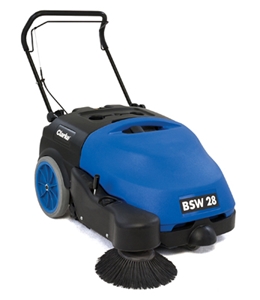This article was originally published in American School & University.
The following are the "lessons learned" from
the winners of the 2012 Green Cleaning Awards for Schools and
Universities. These tips may make an important impact on buildings,
their occupants and the environment. And most are feasible, readily
available and affordable.
Products
In 2012, every winner used
an assortment of green chemicals, paper, equipment, tools and other
products, but so did every entrant. Thus, it is clear that green
products are widely available, meet performance requirements and are
cost-effective.
Innovations in this area included efforts to
reduce product consumption by using those that have higher performance
and greater durability. The use of microfiber products is expanding
(although concerns are increasing about quality because of the lack of
any product standards in this category). And there is growth in the use
of devices that ionize, ozonate, electrolyze and otherwise turn water
into cleaning solutions.
Training
Every program provided
training to custodians; after all, it is the law. But the winners went
beyond the minimum OSHA requirements and those for new employees.
Innovations included training custodians on how
they can reduce energy, water and waste while increasing recycling and
composting. The winners went above and beyond by engaging and providing
training to students, staff, visitors and other stakeholders on what
they can do to create a cleaner, safer and more healthful environment.
Outreach
The winners worked to
engage others through their schools, districts and campuses. Posters,
newsletters, competitions, events, and social and traditional media
helped make green cleaning and sustainability efforts clear, visible and
frequent.
Innovations included garnering the "public"
support of senior leaders in the school or university, as well as in the
community, to give credibility and importance to the issue.
Teamwork
One of the more important
lessons from the winners was teamwork that includes the entire
institution and not just the custodial department. Schools and
universities, large and small, urban and rural, are dealing with budget
and staffing cuts. So, working constructively with teachers, students,
staff, parents and others was a key to success.
Innovations varied from those actually engaging
students in cleaning to higher-level engagement on green teams to help
administer, manage and expand programs. Just imagine what could be
achieved if schools elevated participation on the green team to the same
level as being on the basketball or cheerleading squads.
Formula
Cleaning is a process, and
the winners took the concept to the next level. They had a "formula" for
everything, including the process of cleaning, selecting and reviewing
products on an established basis, training of custodians, outreach to
stakeholders, building the team and more. This year’s winners scored
high in all areas.
Innovations in this area included clear and
written processes and expectations, along with efficient execution that
measured progress and identified opportunities for improvement.
Verification
Although it was common
to find the use of independent third parties such as Green Seal,
EcoLogo, EPA’s DfE Program and the Carpet & Rug Institute to verify
product claims, the leaders did much more. For example, several of the
winners used third parties such as Green Seal and ISSA to verify the
performance of the entire cleaning program, including products, training
and management systems.
Innovations in this area included the use of new technologies such as
ATP meters to measure soil on surfaces. The use of such measurement
tools objectively determined how clean surfaces really were so resources
could be applied effectively in an effort to create and maintain
buildings that are most conducive to learning.


